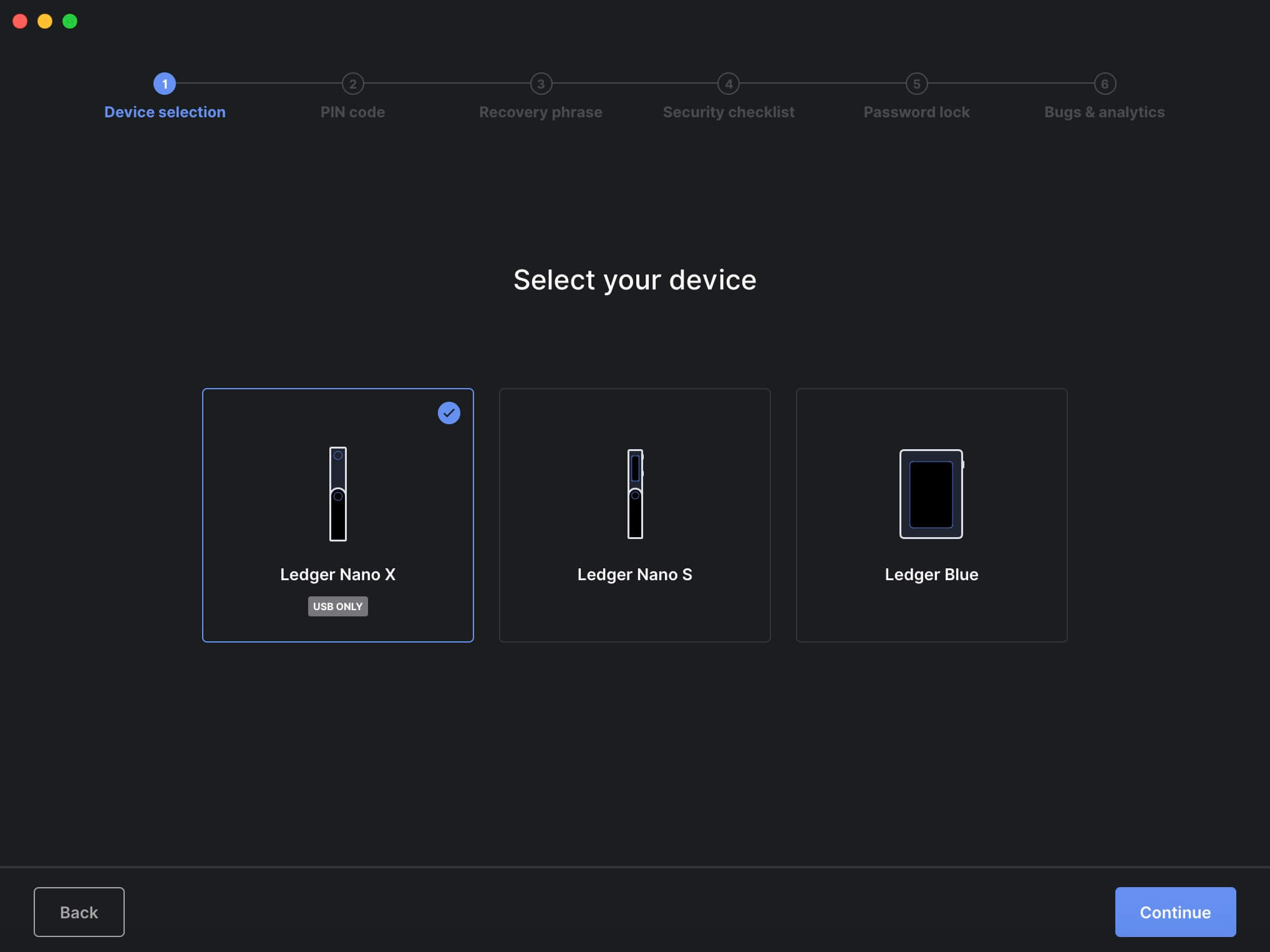Key Facts
In short
- Most popular device: more than 1.5 units sold worldwide
- Easy to use and possible to use on the-go with mobile app
- Integrates secure element (SE) chip to store your private key
Coins
Cardano, Bitcoin Cash, Ethereum Tokens, Monero, Waves, NANO, ZCash, Binance, EOS, Tezos, Stellar, Ripple, Litecoin, Bitcoin, Ether.
Integrations
Metamask, Argent, WithTally.
Price
$119
Release Year
2019
Rating
Score
8.5 / 10
Rating Breakdown
Features
4.5
Usability
4.5
Onboarding
4
Support
4
About Ledger Nano X



The Ledger Nano X is the latest premium hardware wallet model, released in 2019 by the French company Ledger, specialized in developing security and infrastructure solutions for cryptocurrency custody.
Unboxing
The Ledger Nano X comes delivered in a small plastic-foil-wrapped box. Within, you will find the Ledger Nano X device, a braided USB-A to USB-C cable and a keychain strap. Documentation includes a getting started leaflet, three recovery sheets (to write down recovery phrases) as well as a couple of Ledger branded stickers.

Device (& Connectivity)
The Ledger Nano X (like its predecessor, the Nano S) is ideal for those who want to conceal what the device is. If you don’t want people to know that you own a hardware wallet when you go through an airport check for example or when someone breaks into your house, then you should go for the most common-looking product — and the Ledger hardware wallets looks like a fairly inexpensive and mundane USB stick.
However, thanks to its steel enclosure, it is quite robust and as long as it's properly folded, the screen and other components are well protected in case it falls. The two only buttons are built into the device making it feel streamlined and flat.
Unlike its predecessor the Nano S, which had to be plugged into a PC using a USB cable to draw power, the Nano X has a built-in 100mAH battery, meaning that you can use it on the go (e.g with your phone). As a result, the device is a bit heavier and bulkier but still much smaller than the Trezor T or the KeepKey.
The Ledger Nano X is the only hardware wallet including Bluetooth connectivity in addition to the industry standard USB-C port. This makes the Ledger Nano X one of the only hardware wallets that you can use on the go through a mobile app and without carrying cables around.
Setting-up the Ledger Nano X
To begin using the device, you'll first need to download and install the Ledger Live client for your operating system. Ledger Live is currently available on most desktop operating systems including Windows, Mac OS, Linux, as well as mobile operating systems like iOS and Android.

Once Ledger Live is up and running, you can power up the Ledger Nano X device by holding the main button, after which you'll be able to navigate through the startup screens to configure the device. This involves choosing a 4 to 8 digit PIN code, backing up the 24-word recovery phrase and verifying you wrote it down correctly. Ledges does this by asking you to scroll through a large list of words and select the words occurring in your seed phrase. Since the device only has two controls and a small screen it’s quite a fiddly experience, but Ledger makes sure that the process is done with care by the user.

Once set up, you will have to install separate wallet apps for the currencies you want to store. For example if you want to store Bitcoin you need to install the Bitcoin app. During each download the Ledger Nano X needs to be connected to Ledger Live through USB (or Bluetooth for mobile devices). Once you’re done, the downloaded wallet applications will show in the "account" tab.

Ease of use
The Ledger Nano X is straightforward to use and the user experience is beautifully designed. From the sign-up tutorial to a dark mode option and the device itself: every detail looks elegant giving Ledger a very professional look overall.
We like the fact that Ledger makes use of local applications instead of running in a browser like the Trezor wallets. It feels more appropriate for safeguarding large funds but has the downside that you need to install the app on every computer you want to use the wallet from. Sending and receiving coins is simple yet Ledger introduces enough friction to make users apply caution.

Security
From a security design perspective, Ledger’s hardware wallets are different from other hardware wallets like the Trezor as they rely on a secure element chip which acts as a closed-source blackbox. A secure element chip can store sensitive data (such as private keys) and protect it from malware attacks.
The device’s operating system and firmware are also closed-source which is why some security experts in the crypto industry criticize Ledger. Open-source is the norm in the crypto industry and it’s important that security experts can battle-test devices yet Ledger chooses to be quite secretive about security.
On the other hand, Ledger supports the native SegWit (or Bech32) address standard. SegWit addresses that begin with the “bc1” prefix make transaction outputs smaller and, therefore, reduce fees and the amount of block size they occupy, while also bringing compatibility with Wasabi wallet for CoinJoins. Therefore, it’s a matter of reducing costs and increasing privacy.
All, in all the Ledger Nano X is an excellent hardware wallet. It's designed for less-experiences users who enjoy ease of use and comprehensive graphical interfaces. Moreover, the Ledger devices, as the bona fide standard for hardware wallets, benefit from a lot of useful third-party integrations.
We are a multi-faceted team of crypto enthusiasts based in Berlin.
© 2021 cryptotesters UG
Products
Cryptocurrency exchanges
Crypto wallet guide
Crypto savings accounts
Defi lending rates
Crypto cards
Exclusive crypto deals
Ethereum staking
Resources
Articles
Reviews
Podcasts
Tutorials